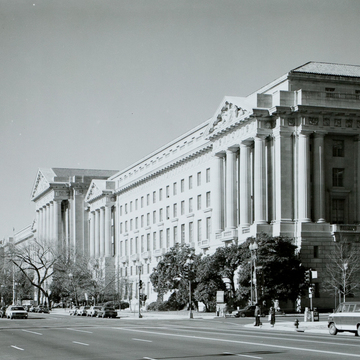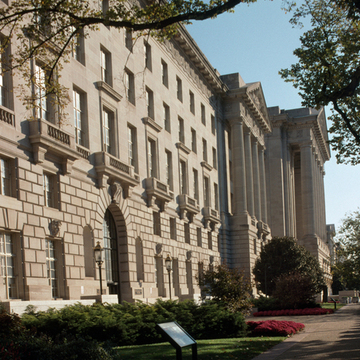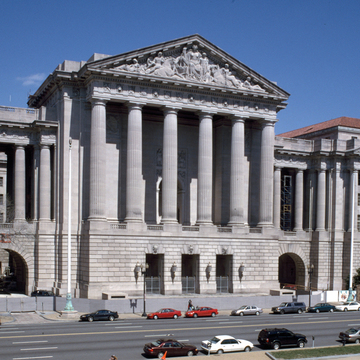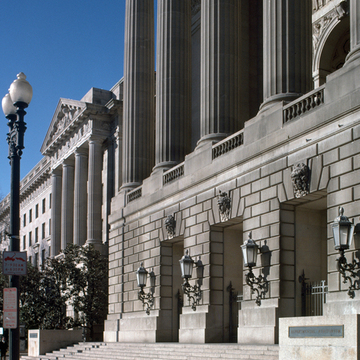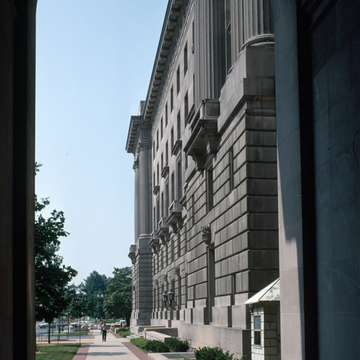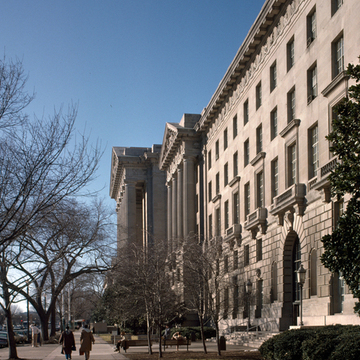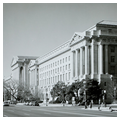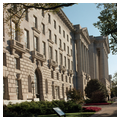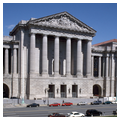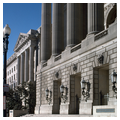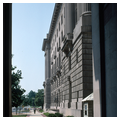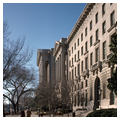Among the most challenging design assignments in the Federal Triangle group was the long building fronting on Constitution Avenue between 12th and 14th streets. It was intended to house the Labor Department (today that section houses the United States Customs Service), the Departmental Auditorium, and the Interstate Commerce Commission. The rear of the building framed the south side of the Grand Plaza and was to coordinate with the Post Office Building at the east end of that open landscape area. The long line of the building enhanced Constitution Avenue as it stretched westward toward the Lincoln Memorial and Arlington Bridge and eastward toward the Capitol.
The project was assigned to Arthur Brown, Jr., the well-known Beaux-Arts practitioner from San Francisco. His impressive list of accomplishments included the San Francisco City Hall and Opera House. His association with the development of the San Francisco Civic Center, another City Beautiful plan, no doubt drew him to the Federal Triangle project. His experience with both office structures and a performing arts center likely led him to this particular commission.
Brown designed the complex with the Departmental Auditorium as the centerpiece facing Constitution Avenue. Flanking the auditorium on the west was the Labor Department and on the east the Interstate Commerce Commission. The auditorium facade is designed as a projecting temple facade

